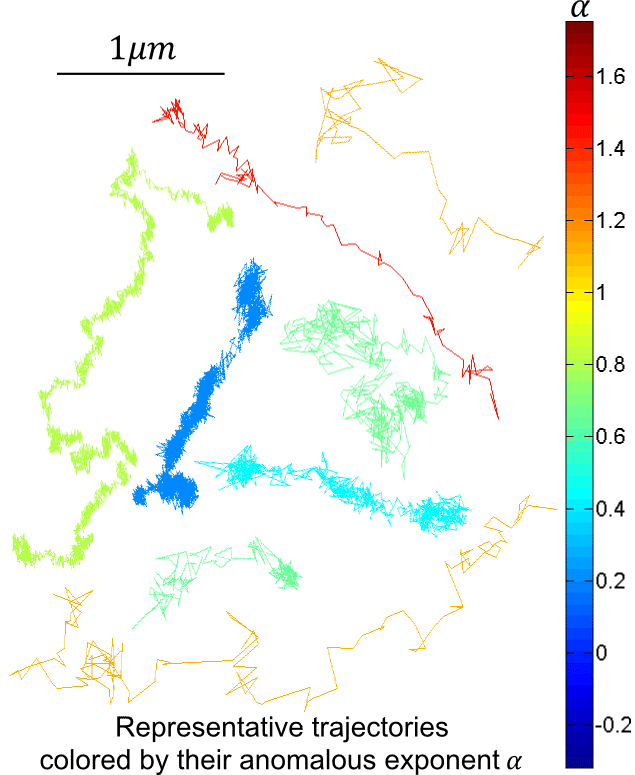The plasma membrane (PM) of a cell can be regarded as a complex fluid in which molecules diffuse and interact. The complexity of the PM can result in anomalous sub-diffusive motion and thus affect molecular function. In spite of the potential significance of molecular mobility to cell function, physical properties of the PM and molecular dynamics within remain poorly understood.
Here, we performed single particle tracking (SPT) of individual membrane proteins that served as nanometer tracers at the PM of live T-cells. The tracers were part of the human immunodeficiency virus (HIV) envelope glycoprotein gp41, whose assembly at the PM plays a critical role in viral budding. By tracking a large number of individual proteins, we observed surprising heterogeneity in their mobility. To better understand the mechanisms that lead to this heterogeneity, we classified the trajectories based on their mobility characteristics, including their instantaneous velocity, area covered by the trajectory and the exponent α in the anomalous diffusion equation 〈r2〉=4Dtα (see figure below). Further statistical tests of the trajectories of the molecular subpopulation showed different dominating mechanisms underlying the heterogeneity in mobility, including molecular trapping, crowding, viscoelasticity of the PM, and their combinations.
Our approach sheds light on the complexity of molecular diffusion of proteins at the PM of live cells, and could serve to further characterize its physical properties and molecular dynamics within.


